Ancient alien sightings have fascinated people for centuries. From ancient drawings and carvings to megalithic structures and ruins, there is an abundance of evidence that suggests extraterrestrial life has visited our planet in the past. In this article, we’ll explore the top 10 most fascinating ancient alien sites around the world.
1. Pyramids of Giza, Egypt

The Pyramids of Giza are one of the most iconic and mysterious ancient structures in the world. Located in Egypt, the pyramids were built during the Old Kingdom period, over 4,500 years ago, and are believed to have been used as tombs for pharaohs and their consorts. While the construction of these massive structures remains an impressive feat of human engineering and architecture, there has been speculation that extraterrestrial beings were involved in their design and construction. These theories propose that the advanced technology and precision used to build the pyramids suggest that they were not built solely by human hands, and that aliens or otherworldly beings may have provided assistance. However, there is no evidence to support these claims, and most scholars and archaeologists believe that the pyramids were built entirely by human labor and ingenuity. The Pyramids of Giza remain a fascinating destination for tourists and history enthusiasts, and continue to inspire speculation and theories about their origins and significance.
2. Stonehenge, England
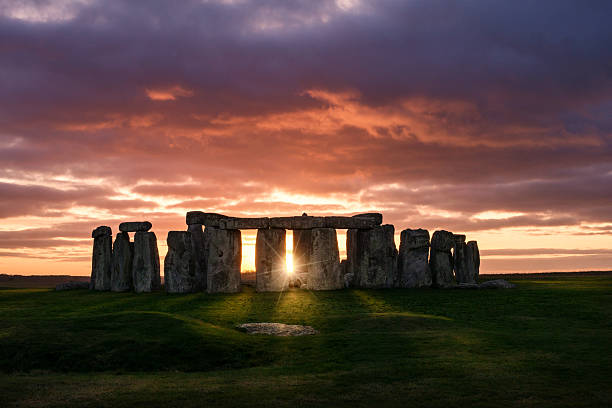
Stonehenge is a prehistoric monument located in the county of Wiltshire, England. It consists of a ring of standing stones, each weighing around 25 tons, arranged in a circular pattern. The monument is believed to have been built between 3000 BCE and 2000 BCE, during the Neolithic period, although its purpose remains a mystery. Many theories have been proposed about the origins and significance of Stonehenge, including that it was used as a burial site, an astronomical observatory, or a place of worship. There have been various theories and speculations about extraterrestrial involvement in the construction of Stonehenge. Some people believe that the complex arrangement of massive stones could not have been created without the assistance of advanced technology or knowledge that was beyond human capabilities at the time. As a result, some have suggested that aliens or otherworldly beings may have played a role in its construction. The monument is also thought to have been the site of important ceremonies and rituals during its use. Stonehenge is one of the most famous and iconic landmarks in the world, attracting thousands of visitors each year who come to marvel at its size, design, and mysterious history.
3. Machu Picchu, Peru
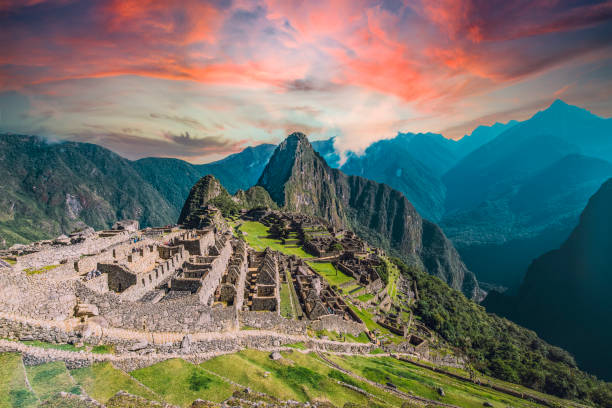
Machu Picchu is an ancient Incan citadel located in the Andes Mountains of Peru. The site was built in the 15th century, during the height of the Incan Empire, and is believed to have been abandoned just a century later, following the arrival of Spanish conquistadors in the region. The ruins of Machu Picchu include a series of impressive stone structures, including temples, palaces, and residences, all constructed without the use of mortar. The site is known for its stunning mountain scenery and its intricate stonework, which demonstrates the advanced engineering and architectural skills of the Incan people. There have been some fringe theories and speculation about the possibility of extraterrestrial involvement in the construction of Machu Picchu. Some people point to the incredible precision and complexity of the stonework, as well as the fact that some of the stones are extremely large and heavy, as evidence that advanced technology was involved in its construction. Today, Machu Picchu is a UNESCO World Heritage Site and a popular tourist destination, attracting thousands of visitors each year who come to explore its ruins, learn about its history, and marvel at its impressive design and construction.
4. Easter Island, Chile
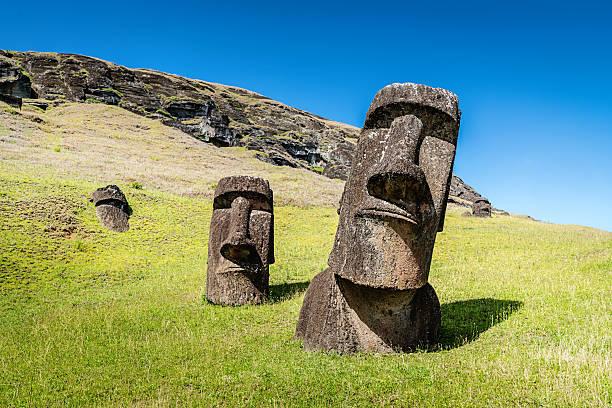
Easter Island, also known as Rapa Nui, is a small volcanic island located in the southeastern Pacific Ocean. It is famous for its unique and mysterious giant stone statues, called moai, which were created by the island’s indigenous people, the Rapa Nui, between the 13th and 16th centuries. The island was first settled by Polynesians, possibly from the Marquesas Islands, around 800 AD. Today, Easter Island is a popular tourist destination, attracting visitors from around the world who come to marvel at its stunning landscapes, learn about its rich history, and experience its unique culture. Despite its remote location and small size, Easter Island continues to fascinate and inspire people from all over the world.
5. Nazca Lines, Peru
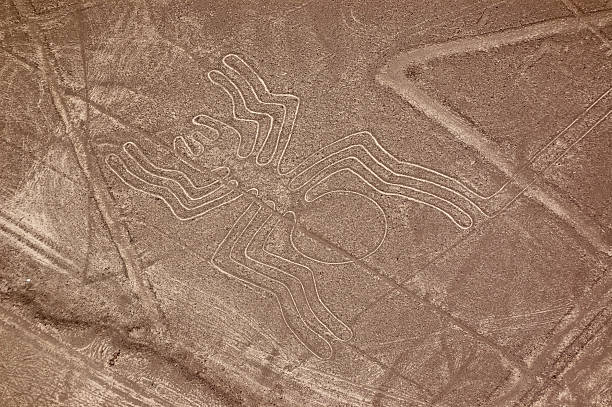
The Nazca Lines are a series of geoglyphs located in the Nazca Desert of southern Peru. These massive drawings cover an area of approximately 80 square kilometers and were created by the Nazca people between 500 BCE and 500 CE. The geoglyphs are formed by removing the reddish-brown iron oxide-coated pebbles that cover the surface of the Nazca Desert, revealing the lighter-colored earth underneath. The lines form a variety of shapes, including animals, plants, and geometric figures, and can only be fully appreciated from the air. The purpose of the Nazca Lines remains a mystery, although some scholars believe that they may have had a religious or astronomical significance. Today, the Nazca Lines continue to attract thousands of visitors each year who come to marvel at these enigmatic and impressive ancient drawings. The Nazca Lines are a testament to the remarkable engineering and artistic skills of the Nazca people, and their creation likely involved careful planning, organization, and collaboration. While there have been various fringe theories and speculations about the possibility of extraterrestrial involvement in the creation of the Nazca Lines, there is no credible evidence to support these claims.
6. Puma Punku, Bolivia
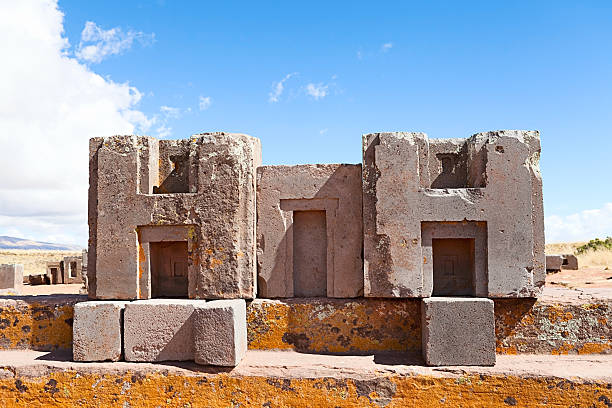
Puma Punku is an archaeological site located in the highlands of Bolivia, near the city of Tiwanaku. The site is home to a group of ruins that include several large stone structures, some of which are believed to have been built as far back as 500 CE by the Tiwanaku civilization. The structures at Puma Punku are known for their unique and intricate stonework, which includes precise cuts and shapes that were achieved using tools that are believed to have been made from copper, bronze, and stone. The purpose of Puma Punku remains a mystery, although some theories suggest that it may have served as a religious or ceremonial site. Despite its significance, Puma Punku remains one of the most enigmatic and mysterious archaeological sites in the world, with many questions still remaining about its origins and purpose. While the construction of the site is an impressive feat of engineering and architecture, most experts believe that it was built entirely by human labor and ingenuity. The site is believed to have been constructed by the Tiwanaku culture using simple tools and techniques. While there have been various fringe theories and speculations about the possibility of extraterrestrial involvement in the creation of Puma Punku, we may never know the validity of these claims.
7. Tiahuanaco, Bolivia
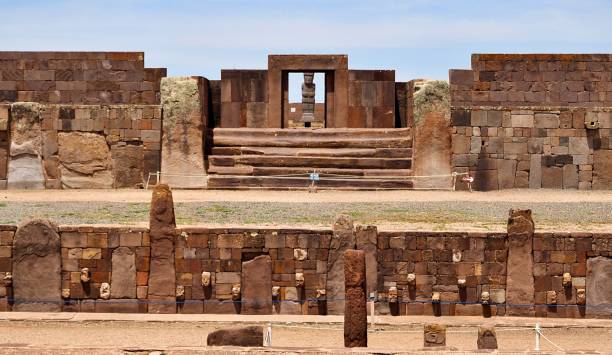
Tiahuanaco is an archaeological site located in the highlands of Bolivia, near the southern shore of Lake Titicaca. The site is home to the ruins of a once-great civilization, the Tiwanaku people, who are believed to have flourished between 300 and 1000 CE. The Tiwanaku civilization is known for its impressive architecture, which includes massive stone structures, intricate carvings, and advanced agricultural and irrigation systems. The precision of the stone work and the complexity of the structures have led many to believe that Tiahuanaco was built with the help of extraterrestrial beings. The ruins at Tiahuanaco include a number of impressive structures, such as the Gate of the Sun and the Akapana Pyramid, which have puzzled scholars for centuries due to their advanced engineering and intricate stonework. The purpose of Tiahuanaco remains a mystery, although some theories suggest that it may have served as a religious or ceremonial center for the Tiwanaku people. Today, Tiahuanaco is a popular destination for tourists and scholars alike who come to explore its impressive ruins and learn more about the fascinating history of the Tiwanaku civilization.
8. Chichen Itza, Mexico
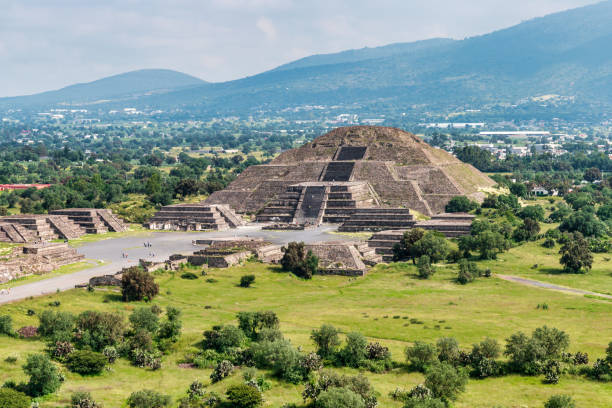
Chichen Itza is a large pre-Columbian archaeological site located in the Yucatan Peninsula of Mexico. The site was originally built by the Maya civilization in the 6th century AD, but was later conquered by the Toltecs in the 10th century AD, resulting in a unique blend of architectural styles and cultural influences. The site is home to many impressive structures, including the iconic El Castillo, a towering pyramid that was used as a temple and astronomical observatory. Other notable structures at Chichen Itza include the Temple of the Warriors, the Great Ball Court, and the Sacred Cenote, a natural sinkhole that was used for religious ceremonies and human sacrifice. The precision of the stone work and the advanced engineering techniques used in its construction have led many to believe that Chichen Itza was built with the help of advanced technology. Today, Chichen Itza is one of the most popular tourist destinations in Mexico, attracting millions of visitors each year who come to explore its impressive ruins and learn about the fascinating history of the Maya and Toltec civilizations.
9. Gobekli Tepe, Turkey
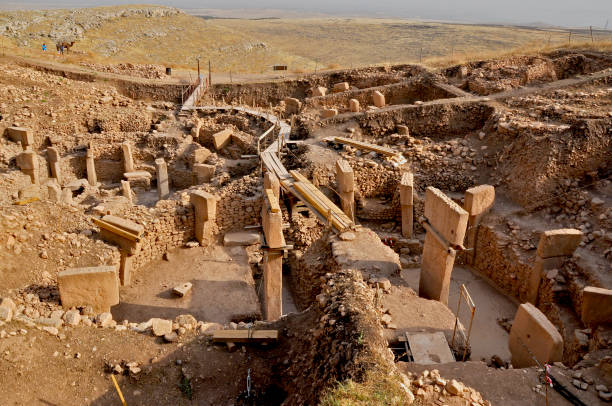
Gobekli Tepe is an archaeological site located in southeastern Turkey, near the city of Sanliurfa. The site is home to the ruins of an ancient temple complex that is believed to have been built around 10,000 BCE, making it one of the oldest known religious sites in the world. The complex includes several circular stone structures that were created using advanced techniques and decorated with intricate carvings of animals, people, and symbols. The precision of the stone work and the advanced engineering techniques used in its construction have led many to believe that Gobekli Tepe was created with the help of extraterrestrial beings. The purpose of Gobekli Tepe remains a mystery, although some theories suggest that it may have served as a gathering place for early humans or as a site for religious ceremonies. The discovery of Gobekli Tepe has challenged many long-held beliefs about the development of human civilization and has led to a reevaluation of our understanding of the origins of religion and the role of ancient societies in shaping the modern world. Today, Gobekli Tepe is a fascinating destination for archaeologists, historians, and tourists who come to explore its ancient ruins and learn more about the history of human civilization.
10. Teotihuacan, Mexico
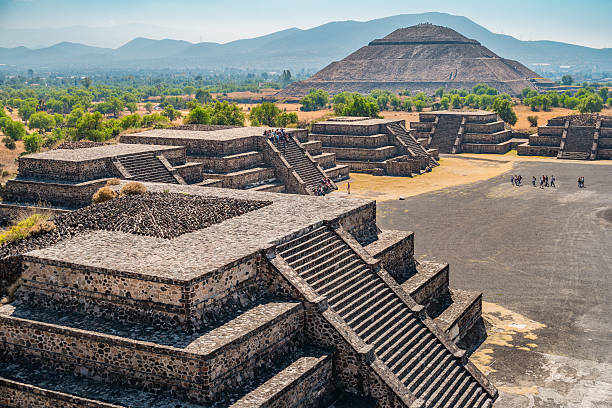
Teotihuacan is an ancient Mesoamerican city located in the Basin of Mexico, about 30 miles northeast of modern-day Mexico City. The city was established in the first century BCE and reached its peak during the first millennium CE, when it was one of the largest and most influential cities in the Americas. The ruins of Teotihuacan include several impressive structures, such as the Pyramid of the Sun, the Pyramid of the Moon, and the Temple of the Feathered Serpent, which are thought to have been used for religious and ceremonial purposes. The city also features a complex network of streets, alleys, and plazas, as well as a well-preserved system of water and drainage channels. The precision of the stone work and the complexity of the structures have led many to believe that Teotihuacan was built with the help of advanced technology. The purpose of Teotihuacan remains a mystery, although some theories suggest that it may have served as a major religious and political center for the Mesoamerican civilizations that flourished in the region. Today, Teotihuacan is a popular tourist destination, attracting millions of visitors each year who come to explore its impressive ruins and learn about the fascinating history of the ancient Mesoamerican cultures.
These ancient alien sites have puzzled historians and archaeologists for centuries. While there are many theories about how they were constructed, one thing is clear: they are a testament to the advanced engineering and technological skills of ancient civilizations, and the possibility that they had help from extraterrestrial beings.










